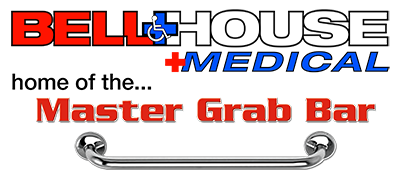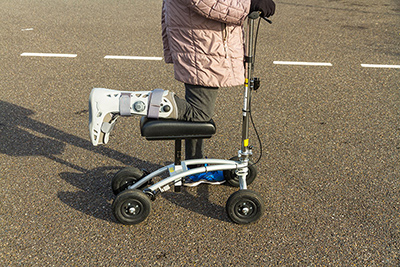Non Weight Bearing | Non Weight Bearing Mobility
Thu, Feb 8th, 2024
As we age, our bodies undergo numerous changes, and unfortunately, this often includes an increased likelihood of experiencing injuries or requiring surgeries. For older adults and seniors, certain surgeries and injuries may necessitate a period of non-weight bearing, presenting unique challenges in mobility and daily activities. In this blog post, we'll explore some common surgeries and injuries among seniors that require non-weight bearing, as well as strategies for navigating this challenging time.
Common Surgeries and Injuries Requiring Non-Weight Bearing
Hip Fractures: Hip fractures are a significant concern among older adults and can result from a fall or other trauma. Surgery to repair a hip fracture often involves stabilizing the fractured bone with pins, screws, or plates. During the initial recovery period, patients are typically instructed to avoid putting weight on the affected leg to allow for proper healing.
Ankle Fractures: Fractures of the ankle are also common among seniors, often resulting from falls or twisting injuries. Surgery may be required to realign the bones and ensure proper healing. Non-weight bearing is usually recommended following ankle surgery to prevent further damage and promote optimal recovery.
Foot Surgeries: Seniors may undergo foot surgeries such as bunionectomy, Achilles tendon repair, or foot reconstruction to address various conditions and injuries. Depending on the type of surgery performed, patients may need to avoid bearing weight on the affected foot to facilitate healing and prevent complications.
Knee Replacements: Knee osteoarthritis is prevalent among older adults, and when conservative treatments fail to provide relief, a total knee replacement may be recommended. Following knee replacement surgery, patients are usually advised to refrain from putting weight on the operated knee until cleared by their surgeon.
Navigating Non-Weight Bearing: Tips and Strategies
Assistive Devices: Utilizing assistive devices such as crutches, walkers, knee walkers, or wheelchairs can help seniors maintain mobility while avoiding weight-bearing on the injured limb. Proper training and instruction from healthcare professionals are essential to ensure safe and effective use of these devices.
Home Modifications: Making modifications to the home environment can enhance safety and accessibility during the non-weight-bearing period. This may include installing grab bars in the bathroom, securing handrails along staircases, and rearranging furniture to create clear pathways for mobility aids.
Physical Therapy: Engaging in a tailored physical therapy program can aid in maintaining strength, flexibility, and balance while adhering to weight-bearing restrictions. Physical therapists can prescribe exercises that focus on the upper body and unaffected limbs, as well as provide guidance on proper body mechanics to prevent strain and injury.
Assistance from Caregivers: Seniors may require assistance with activities of daily living during the non-weight-bearing period. Family members, caregivers, or professional home care services can offer support with tasks such as bathing, dressing, meal preparation, and household chores.
Transportation Options: Getting around outside the home may pose challenges for seniors who are non-weight bearing. Exploring transportation options such as accessible taxis, ride-sharing services, or public transit with wheelchair accessibility can help seniors maintain independence and stay connected with their community.
Emotional Support: Dealing with a period of non-weight bearing can be emotionally challenging for seniors, especially if it interferes with their usual activities and independence. Providing emotional support, encouragement, and reassurance can help seniors navigate this temporary setback with resilience and positivity.
In conclusion, surgeries and injuries that require non-weight bearing are common among older adults and seniors, presenting unique challenges in mobility and daily activities. By implementing strategies such as assistive devices, home modifications, physical therapy, assistance from caregivers, transportation options, and emotional support, seniors can effectively navigate this challenging period and optimize their recovery outcomes. At Bell House Medical, we are committed to supporting seniors and healthcare providers in creating safe and accessible environments that promote healing and independence.






